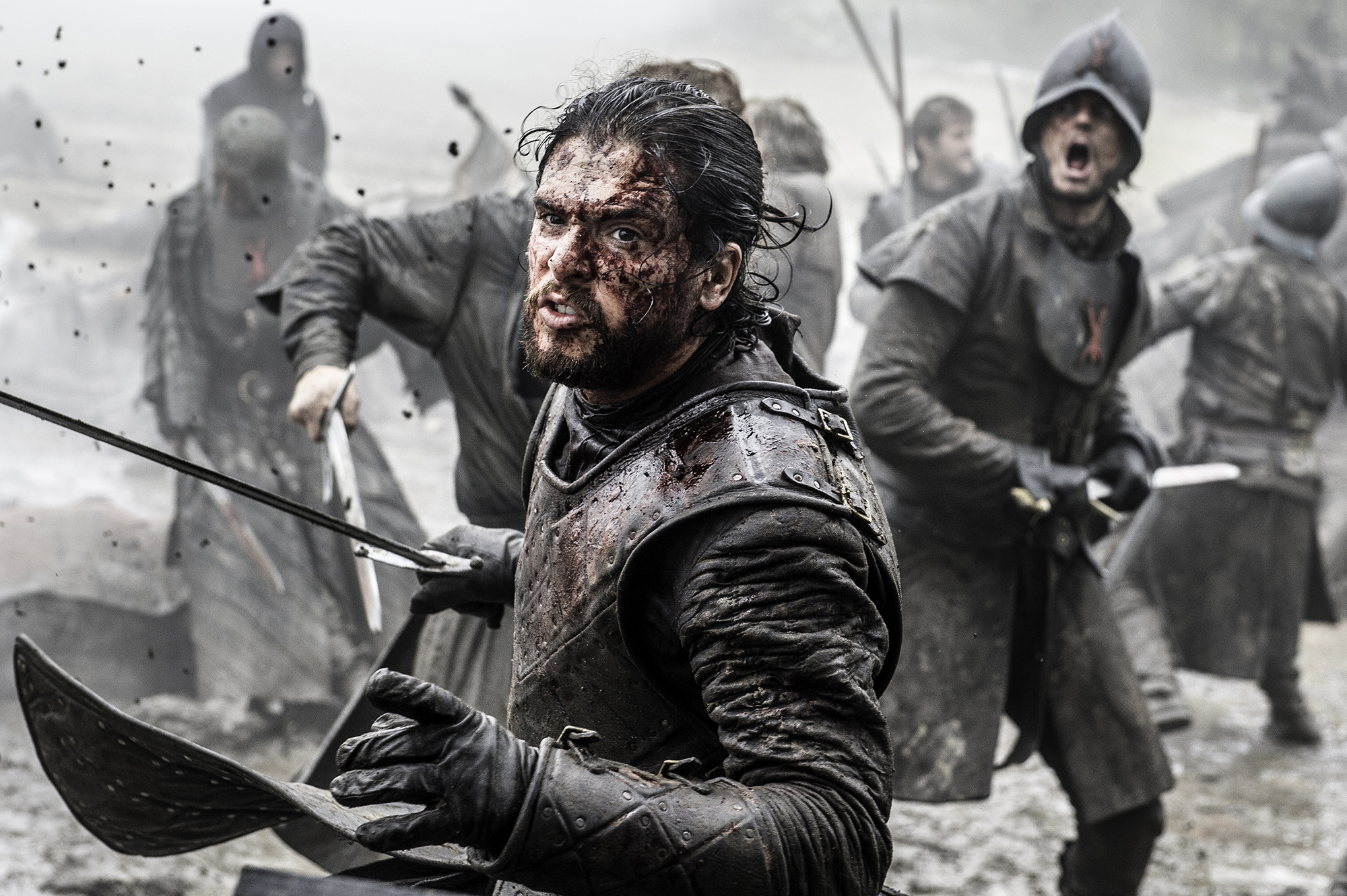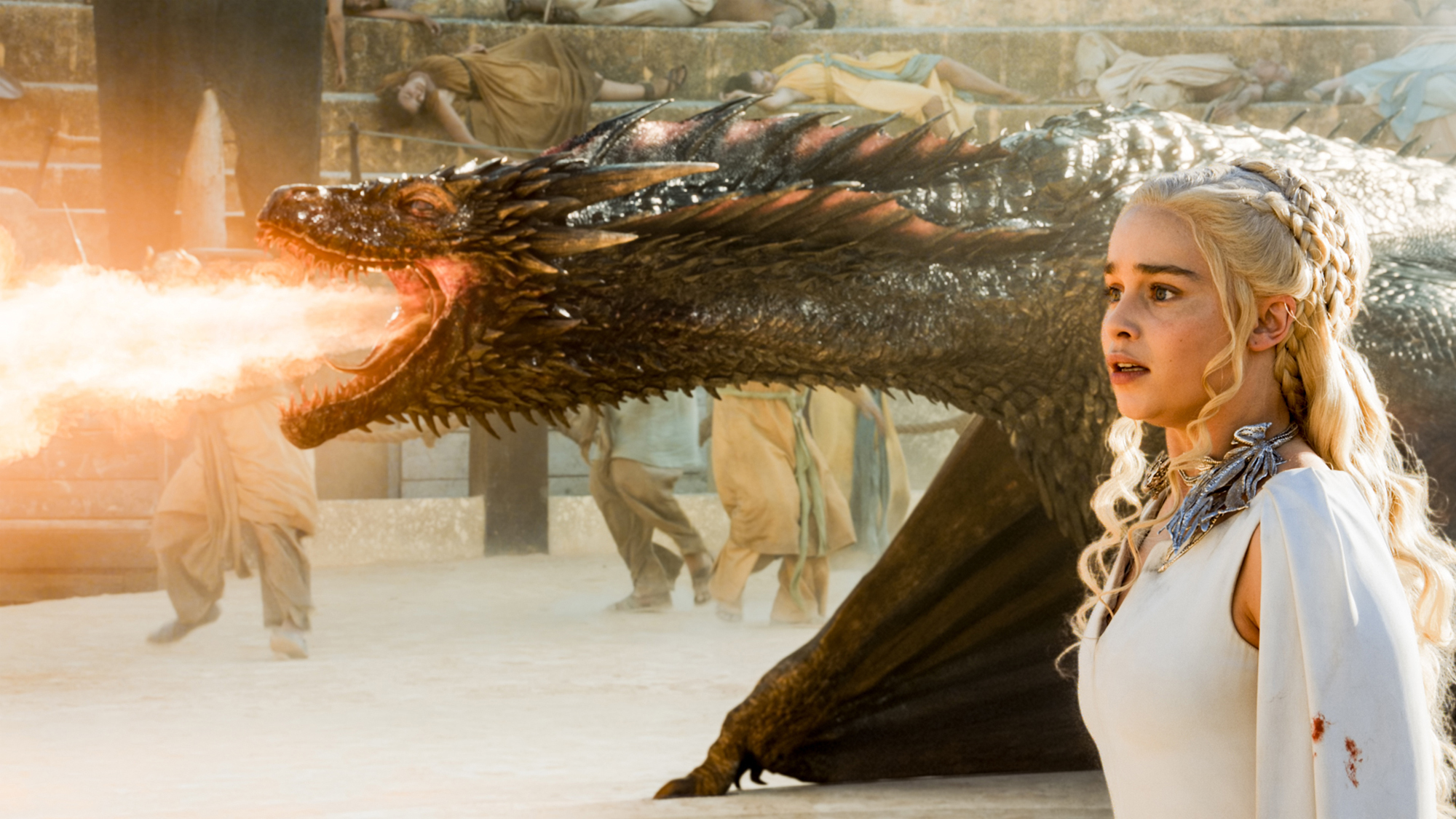The practical stunt work on Game of Thrones has lent the show real gravity, creating a sense of physical space that visual effects still cannot quite credibly convey. Rowley Irlam is the show’s stunt coordinator, and has led the show through sequences including the epic “Battle of the Bastards” in season six, covered in more detail here.
In January, Irlam spoke to TIME for our cover story on Thrones (whose seventh season debuts July 16) and explained the process of planning and executing the complicated stunts that have won him two Emmys so far and won the show legions of action-hungry fans. Here’s an edited transcript of that conversation.
Talk me through the genesis of stunt sequences.
Before we start, we get a whole season outline that will go into detail about battles and other key things. So you start with: We’ve got a horse-on-horse battle, or a dragon against people on horses, we’ve got a fight with five people, we’ve got a fight with two people, an execution. You start thinking about how you might start to approach these things. Two months ahead of principal photography, we start getting writers’ drafts of scripts, which probably go into more detail. But then we will start getting some information about what the boys would like the fights to be, or the key moments. They’ll start talking about what Jon Snow does in the battle — his brother gets killed, and he goes reckless. He gets shot off his horse: How do we do that? You normally have an idea of how you’ve done things before, but by the same token are trying to make it fresh and new.
Essentially, every swordfight has six attacks and six parries as a basis and that is it. So you need to take those six parries and make them look different and fresh and interesting and character-driven and try and give the audience those moments where they go “Whoa, I didn’t see that coming.” The f—-me moments. When you see it, you go “F— me!” That’s what I’m trying to do, make people sit up, and then talk about it afterwards.
Tell me about the specific styles of fighting each character has.
We’ve got someone like Jorah [Mormont, Iain Glen’s character], who’s a Westerosi knight so you want to make him feel very sword-driven, but he has a certain style as if it’s an army-trained, regimental style. Kit [Harington, who plays Jon Snow] is very accomplished, so we try to give him flashier signature moves. One of our signature moves is every time he’s about to kick off, we get him to take his scabbard off and get rid of it. It’s become a signature move. I knew that when he was running, it was going to flap around and not look that cool. We’ve tried to make it look like, “OK, when Jon Snow thinks there’s going to be a fight, he pitches the scabbard and strips back down to basics.”

The set pieces each season have gotten more and more ambitious. Do you ever have a moment where you say, we can’t do this?
When you’re filmmaking or making a TV show, there are no boundaries. There’s nothing that cannot be achieved with time and money anyway. If it’s not physically possible using natural human energy, I will use wires and effects to make it possible.
With that said, has it gotten more challenging to accomplish all that’s in the script?
Certainly, because this season we’re doing seven episodes and it’s taken two months longer. So, yes, it’s all getting bigger. Next year is the final season, and it’s ramped [up] from season to season. We thought it was a big deal in season five to set fire to six people at once, nineteen people in one day. And yet we’ve just gone out to Spain and set fire to twenty people in one shot and done 63 full-fire jobs in four days. Our stunt adjustment budget has probably been doubled — stunt performers get paid a rate for doing things of hazardous nature, and that budget has been doubled since my first season. I was having a conversation with [co-showrunner] David Benioff he indicated we were just warming up. Heaven knows what’s going to come next year.
How many stunt performers do you have on hand at the height of filming?
This year out in Spain we had 65 stunt performers, which is a massive call. [The 2004 film] Troy in its biggest scope had 45. We had 65 in Spain and 45 in Northern Ireland, so we had 110 stunt performers in two countries. That represents approaching half of the stunt performers in the U.K. available to everybody. We had 15 different countries represented in Spain as well. And 65 stuntmen on [season 6 episode] “Battle of the Bastards,” 70 horses.
Are there any other sequences that stick out as particularly challenging or memorable?
In [season 5 episode] “The Dance of Dragons,” we put dragons’ breath on a motion-controlled techno-dolly and we were hitting people with a 45-foot flamethrower throwing lit IPA, isopropanol alcohol, which is incredibly clean-burning but incredibly flammable liquid. We did a lot of burns that day. That was quite technically challenging, and obviously, you’re setting fire to people, and they were very alight, that has its own prep you have to do. I wouldn’t say there’s trepidation, because you know what you’re doing and you plan what you’re going to do, but if you don’t have empathy for the six people you’re setting fire to, you shouldn’t have my job.

You can plan for it, but it must be strange to light six people on fire in a single sequence for the first time.
It’s still a big deal! And this year, whether you can say it or not, we have upped the ante. Another standout sequence of that season was “Hardhome.” That was the first time, I, in this season, did a big sequence with the wights. A key, for me, was to get their performance to a place that was unlike any other show’s. We’re not the only show with that type of creature, so you want to make our creatures stand out.
They’re also not just fast humans; humans have moments of hesitation, whereas the wights just go.
These guys don’t care — they’re already dead.
More Must-Reads from TIME
- Caitlin Clark Is TIME's 2024 Athlete of the Year
- Where Trump 2.0 Will Differ From 1.0
- Is Intermittent Fasting Good or Bad for You?
- The 100 Must-Read Books of 2024
- Column: If Optimism Feels Ridiculous Now, Try Hope
- The Future of Climate Action Is Trade Policy
- FX’s Say Nothing Is the Must-Watch Political Thriller of 2024
- Merle Bombardieri Is Helping People Make the Baby Decision
Contact us at letters@time.com